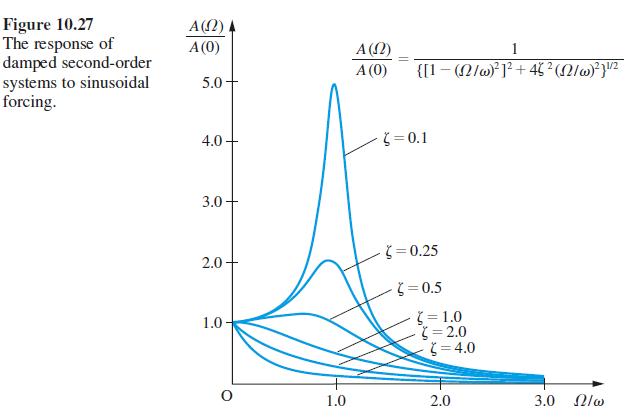The second-order, linear, nonhomogeneous constant-coefficient differential equation (often referred to as a forced harmonic oscillator) has a
Question:
The second-order, linear, nonhomogeneous constant-coefficient differential equation
![]()
(often referred to as a forced harmonic oscillator) has a response
![]()
is often called the frequency response (strictly it is the amplitude response or gain spectrum) and is given by (10.55) and shown in Figure 10.27. How does the frequency response of the second-order, nonlinear, nonhomogeneous constant-coefficient differential equation

differ from that of the linear one?
Equation 10.55


Fantastic news! We've Found the answer you've been seeking!
Step by Step Answer:
Related Book For 

Question Posted:





